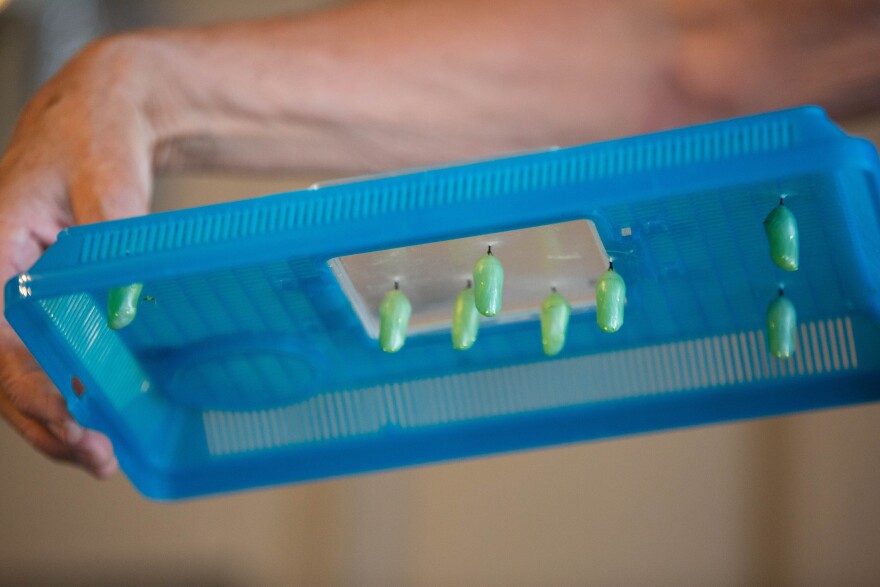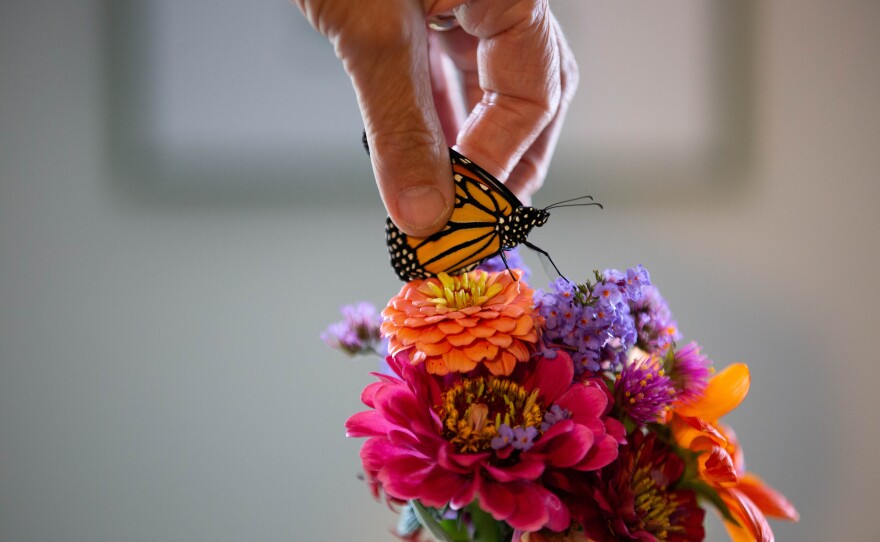Monarch butterflies famously migrate to Mexico in the winter, traveling along well established routes. One of those routes runs along the shoreline of Connecticut. An organic gardener whose mission is to increase the population of migrating monarchs will be in New Haven this weekend to show people how to raise and release these amazing creatures.
Nancy DuBrule-Clemente is the owner of Natureworks, an organic garden center in Northford, Connecticut. She remembers when monarch butterflies were everywhere in Connecticut. But the monarch population has dwindled. Their winter sanctuary in Mexico is being threatened by illegal logging, and once they leave Mexico and head to the Midwest, lack of milkweed, a crucial plant for monarchs, hinders their ability to lay eggs.
“In the Midwest, milkweed is a weed. It's a farmer's weed, it's toxic to cows,” said DuBrule-Clemente. “It grows like crazy, and they're using lots of herbicides to kill it. So now they get to the Midwest, and either it's toxic or it's not there, so there is nowhere to lay their eggs, so they die. So that stops the population cold.”
Extreme weather due to global warming has also wreaked havoc on the monarchs. And DuBrule-Clemente said they’re vulnerable all along their migration route in Connecticut.
“2 out of every 100 eggs becomes a butterfly. Everything eats monarchs. Everything bothers them. So by raising them you actually can increase the migration levels dramatically.”
DuBrule-Clemente and her staff at Natureworks raise hundreds of monarchs each year. They raise them indoors in plastic terrariums to shield the eggs, and later caterpillars from predators and rough weather. She said raising them isn't hard, but the conditions have to be just right.
“This box came from my house,” said DuBrule-Clemente. “I cleaned it this morning, and put fresh milkweed in there. I collect the milkweed, wash it, and then use unscented paper towels, we just use water. So now this guy is hanging in a J formation. So his feelers are up, which means he's just started to hang, he's attached with silk. This guy is spinning his silk, and then this one has already attached and has formed a chrysalis. And this all happened today.”

Another important step happens after the butterfly leaves the chrysalis, and before it's released -tagging. It’s a delicate process, but crucial in helping scientists learn more about these fascinating insects. The tag is a tiny sticker that must be placed on a certain spot on the butterfly's wing. The information on the tag is downloaded onto the Monarch Watch website.
DuBrule-Clemente said she tagged over 700 monarch butterflies last year. So far 3 of those tagged monarchs have been detected in Mexico. DuBrule-Clemente said even if you aren't up for raising monarchs there are other things you can do to help migrating monarchs on their journey.
“Plant milkweed or any kind of asclepias,” advised DuBrule-Clemente. “Asclepias is the genus that milkweed is in. Then plant lots of nectar flowers, all throughout the summer and fall. Especially in the fall. By planting lots of flowers especially strong pollinating nectar flowers, you are giving them an easy time. And they'll come to your yard. They will find it.”
But she notes that it’s important that the milkweed and the flowers are pesticide free, or the butterflies will die.
Nancy DeBrule-Clemente brings her hands-on presentation "Raising Monarch Butterflies" to New Haven's Pardee-Morris House this Sunday afternoon at 2 o'clock.






